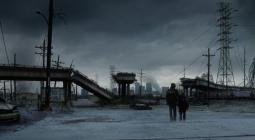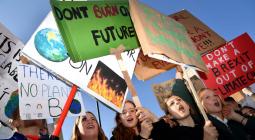The End of the World Or: The unfortunate results of ignoring an inconvenient truth.

It was a balmy, bordering on uncomfortably hot day in Washington, D.C. on June 1, 2017.
The temperature in the capitol climbed to 85 degrees Fahrenheit, five degrees above the historical average, as a crowd of federal officials sweated in their suits to watch President Trump stand in the Rose Garden of the White House and issue a statement that would be considered Orwellian by climate scientists.
After stressing his unwavering commitment to the American people, the President announced, “Therefore, in order to fulfill my solemn duty to protect America and its citizens, the United States will withdraw from the Paris Climate Accord.”
The accord was a last-ditch effort by the international community to do something, anything really, to address climate change. As Trump’s predecessor and personal nemesis President Obama put it last year when he was still in office, the agreement between 196 nations was essentially “the best possible shot to save the one planet we’ve got.”
In an interview with The New York Times, renowned political thinker Noam Chomsky offered his two cents on the two most pressing issues facing humanity today.
As we hit a point in human history when our global community’s ability to work together seems strained, while developed nations experience a wave of authoritarianism not seen in over half a century, both climate change and nuclear proliferation threaten to end life on Earth as we know it.
Highlighting these two issues, Chomsky referenced President Trump’s decision to pull out of the Paris Climate Accords and a recent article in the Bulletin of Atomic Scientists as two vastly under appreciated canaries in the coal mine warning us of just how close we are to the brink.
As we continue to chronicle the sixth mass extinction event in the planet’s history in real time, humans face a crucial point of reflection. The systems we have organized ourselves into over the course of the past several centuries have shaped our post-Westfalian political and economic landscape of nation states run on fossil fuels, and an international community undergirded by the constant threat of mutually assured nuclear destruction.
Ironically, the very innovations that have allowed our population to expand so rapidly now threaten to eliminate us entirely. Today we sit on the edge of extinction, while academics like Chomsky and Stephen Hawking issue grave warnings and advocate for humans to become a “multiplanetary species.”
Modern homo sapiens have only existed for approximately 200,000 years, whereas the Earth is well over 4 billion years old. So far, we have been given no reason to believe our species will last longer than any of the others that have come and gone before us.
Any child with an elementary school education can recite the narrative of how dinosaurs once roamed the Earth, only to be wiped out when an asteroid struck the planet, altering the climate and destroying the resources dinosaurs needed to survive.
The circumstances we face today inevitably beg the question of whether our time in this universe is, in fact, nearing its inevitable end, or the intellectuals raising alarm bells are merely neo-Malthusians, preaching about a doomsday that remains perpetually on the horizon.
In this piece, the first of two parts, I will argue that the myriad existential threats faced by humanity today including climate change, nuclear proliferation, mass extinction, and the resulting stalled global productivity assault our species on too many fronts for us to possibly appreciate the scale of the threat we face or to take any significant steps to avert catastrophe.
I will lay out the dire circumstances in which we find ourselves, point to the interrelated nature of these threats, and lead to the conclusion that it is unlikely humans will undertake the exhaustive efforts necessary to ensure our species will survive for another 1,000 years on Earth.
Rushing Toward Ruin
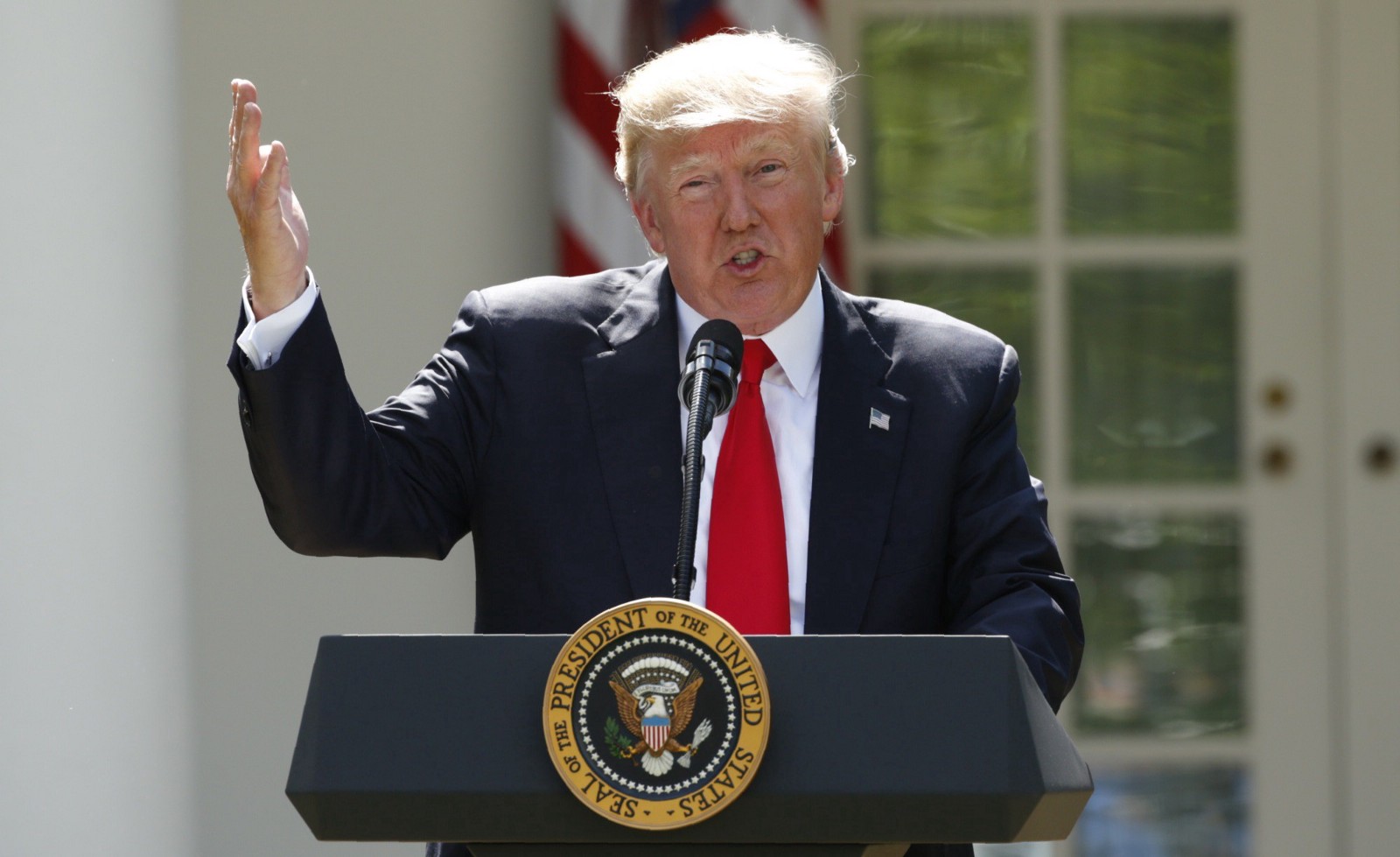
Humans have had a relatively good, albeit short, run as a species. We are defined by a unique resourcefulness that quickly set us apart from other species, a trait that ultimately might prove to be our hamartia.
As Kolbert notes, “The members of the species [humans] are not particularly swift or strong or fertile. They are, however, singularly resourceful. Everywhere they settle, they adapt and innovate.”
Those two words essentially sum up the history of human achievement thus far; we have adapted, and we have innovated. Through the agricultural revolution, two industrial revolutions, and countless social revolutions, we have expanded our population and consistently found new means of keeping more people alive.
Perhaps the most remarkable thing about our population growth is that in recent centuries, it has been exponential, rather than linear. Kolbert observes that, “in a single century the population doubles, then it doubles again, and then again.”
This phenomenon is correlated with Moore’s law, which dates back to the observation made by Intel co-founders Gordon Moore in 1965 that the number of transistors per square inch on integrated circuits had doubled every year since their invention.
Therefore, Moore concluded, this trend of exponential technological advancement would continue indefinitely. In the fifty years since Moore’s initial observation, he has largely been proven right, with the rate slowing somewhat but the number of transistors per square inch still doubling roughly ever 18 months.
This growth, exponential as it may be, has continued to depend on the depletion of finite ecosystem services that modern economics do not account for. The result is climate change so severe it threatens our ability to inhabit the Earth.
In 1968, Garrett Hardin wrote in Science magazine, “ruin is the destination toward which all men rush, each pursuing his own best interest in a society that believes in the freedom of the commons.”
Climate Change and Sea Level Rise
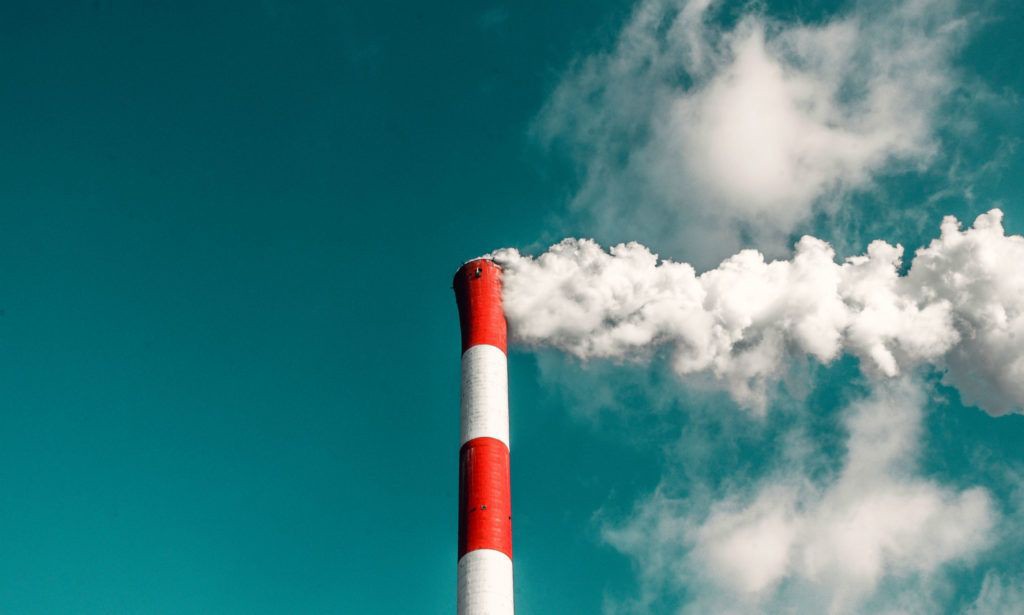
In 2013, scientists at the Intergovernmental Panel on Climate Change released a report stating that, “warming of the climate system is unequivocal, and since the 1950s, many of the observed changes are unprecedented over decades to millennia. The atmosphere and ocean have warmed, the amounts of snow and ice have diminished, sea levels have risen, and the concentrations of greenhouse gases have increased.”
The report also noted that, “global sea level rise is caused by an increase in the volume of the global ocean. This is caused by warming the ocean, loss of ice by glaciers and ice sheets, reduction of liquid water storage on land.”
Acknowledging a range of potential levels of sea level rise between 26cm and 98cm by 2100, the report provided for the additional uncertainty introduced by Antarctic ice sheets.
The panel wrote, “only the collapse of marine-based sectors of the Antarctic ice sheet, if initiated, could cause global mean sea level to rise substantially above the likely range during the 21st century. However, there is medium confidence that this additional contribution would not exceed several tenths of a meter of sea level rise during the 21st century.”
If ice sheet collapse over the next century goes beyond the estimates of current studies, countless more billions in infrastructure and property will be destroyed, displacing the entire populations of major cities.
Another article, ‘Temperature-Driven Global Sea-Level Variability in the Common Era” published in the Proceedings of the National Academy of Sciences of the United States of America in March, 2016, adopts an alternative model to the one utilized by the IPCC to generate a broader range of potential sea level rise projections.
Researchers Kopp et al write, “the new semiempirical model largely reconciles previous differences between semiempirical 21st century GSL projections and the process model-based projections summarized in the Intergovernmental Panel on Climate Change’s Fifth Assessment Report.”
Using a semi-empirical model, this study creates three projections for sea level rise dependent on greenhouse gas emission policies over the rest of the century which can be categorized as either “business as usual emissions,” “moderate emissions abatement,” or “extremely strong emissions abatement.”
Kopp et al conclude, “forward projections indicate a very likely 21st century GSL rise of 52–131cm under RCP 8.5 and 24–61cm under RCP 2.6, values that provide greater consistency with process model-based projections preferred by AR5 than previous semiempirical projections.”
The implications of sea level rising even to the lowest end of these predictions will have grave implications for humanity, sinking countless low-lying islands and wreaking havoc in coastal cities with millions of residents.
A 2016 article in Nature, “Millions projected to be at risk from sea-level rise in the continental U.S.,” explores the effects that rising oceans will have on vulnerable areas. In particular, the article finds that projections must take into account the population growth experienced by areas which will be affected.
Researchers Hauer et al write, “we find that a 2100 SLR of 0.9m places a land area projected to house 4.2 million people at risk of inundation, whereas 1.8m affects 13.1 million people — approximately two times larger than indicated by current populations.”
This estimate is for the U.S. alone, with Hauer et all assuming that sea levels will rise to the high end of predictions made by Kopp et al, while also accounting for even higher potential sea level rise.
This higher range could also be possible in more conservative models, when allowing for the possibility of Antarctic ice sheet collapse and an accompanying additional increase of up to several tenths of a meter, as noted by the Alexander et al in the IPCC report.
Looking at the potential economic impacts of long-term sea level rise adaptation strategies, Hauer et al observe that “recent estimates of annual global costs for adapting coastal flood protection infrastructure to a 2100 SLR of 2.0m are approximately US $421 billion per year. Although such cost inventories are helpful, they do not take into account expansions in population and infrastructure that are likely to take place before inundation occurs.”
While the estimated national cost alone is already in the hundreds of billions, the real figure is essentially impossible to predict considering future development and population growth trends and could be much higher if ice sheets collapse.
Simply put, sea level rise alone is already on track to pose an unprecedented economic and existential threat to many of the major population and economic centers of the world, and scientists are warning us it might be worse than we could have predicted.
Many would be skeptical of the idea that unmitigated sea level rise alone poses an existential threat to humanity, as it would undoubtedly severely disrupt our lives but not necessarily end it.
However, sea level rise is merely one of many factors that threatens us as a result of climate change, and its severe effects on human civilization will play into a collapse of the global economy if not properly accounted for at least decades in advance.
It is possible that if other threats to our planet, climate, and overall survival are somehow averted, sea level rise alone might not necessarily cause a complete collapse of the global economy, if proper preparations to improve infrastructure and adjust market values to achieve parity with future sea levels are undertaken.
Unfortunately, in many large coastal cities in the U.S. the opposite has been happening. San Francisco, New York, Los Angeles, Miami Beach, and countless other cities with record high property values will be among the most severely inundated as sea levels rise over the next century.
Most likely, sea level rise will be one of several factors along with a potential nuclear war, mass starvation, and an overall uninhabitable earth that will spell the end of humanity’s brief time here.
The Sixth Mass Extinction

Elizabeth Kolbert writes in her book, The Sixth Extinction: An Unnatural History, “no creature has ever altered life on the planet in this way before, and yet other, comparable events have occurred. Very, very occasionally in the distant past, the planet has undergone change so wrenching that the diversity of life has plummeted.”
Not only have humans had an unprecedented effect on our environment, we have now triggered the sixth mass extinction event in the history of the planet.
In a study published in Science Advances titled “Accelerated modern human-induced species losses: Entering the sixth mass extinction,” researchers use the most conservative assumptions possible to determine whether we are currently experiencing an abnormal rate of extinction.
They used an estimated background rate of extinction that was arbitrarily doubled from any previous estimates, and only considered the extinction of species that have met certain strict criteria to be listed as such.
The results speak for themselves, “even under our assumptions, which would tend to minimize evidence of an incipient mass extinction, the average rate of vertebrate species loss over the last century is up to 100 times higher than the background rate.”
Perhaps most alarmingly, the exponential population and economic growth of humanity over the past century appears to have been paralleled by a similarly rapid growth of extinction rates, “under the 2E/MSY background rate, the number of species that have gone extinct in the last century would have taken, depending on the vertebrate taxon, between 800 and 10,000 years to disappear.”
Given that our lives are dependent on the ecosystem services provided and maintained by countless other species, many of which we never even directly interact with, this significantly increased rate of extinction will undoubtedly pose an existential threat to humanity if it continues.
The researchers are confident in their conclusions, asserting, “estimates reveal an exceptionally rapid loss of biodiversity over the last few centuries, indicating that a sixth mass extinction is already under way.”
The rising sea levels Al Gore tried to warn us about over a decade ago might not have struck a sufficient level of fear into people to inspire them to act, but if the prospect of a mass extinction age doesn’t convince us it’s unlikely anything will.
The Science Advances study concludes with a glimmer of hope, noting that, “averting a dramatic decay of biodiversity and the subsequent loss of ecosystem services is still possible through intensified conservation efforts, but that window of opportunity is rapidly closing.”
To some, the words “rapidly closing window of opportunity” might evoke the imagery of a typical Hollywood ending, offering reassurance that there is still hope and a hero will swoop in to save the day at the last minute.
In reality, when the reality television star who claims that, “I alone can fix it” pulls the world’s largest economy out of the only international agreement to mitigate the effects of climate change, the hero we are counting on seems to be speeding up the rate at which we race toward extinction.
Nuclear War
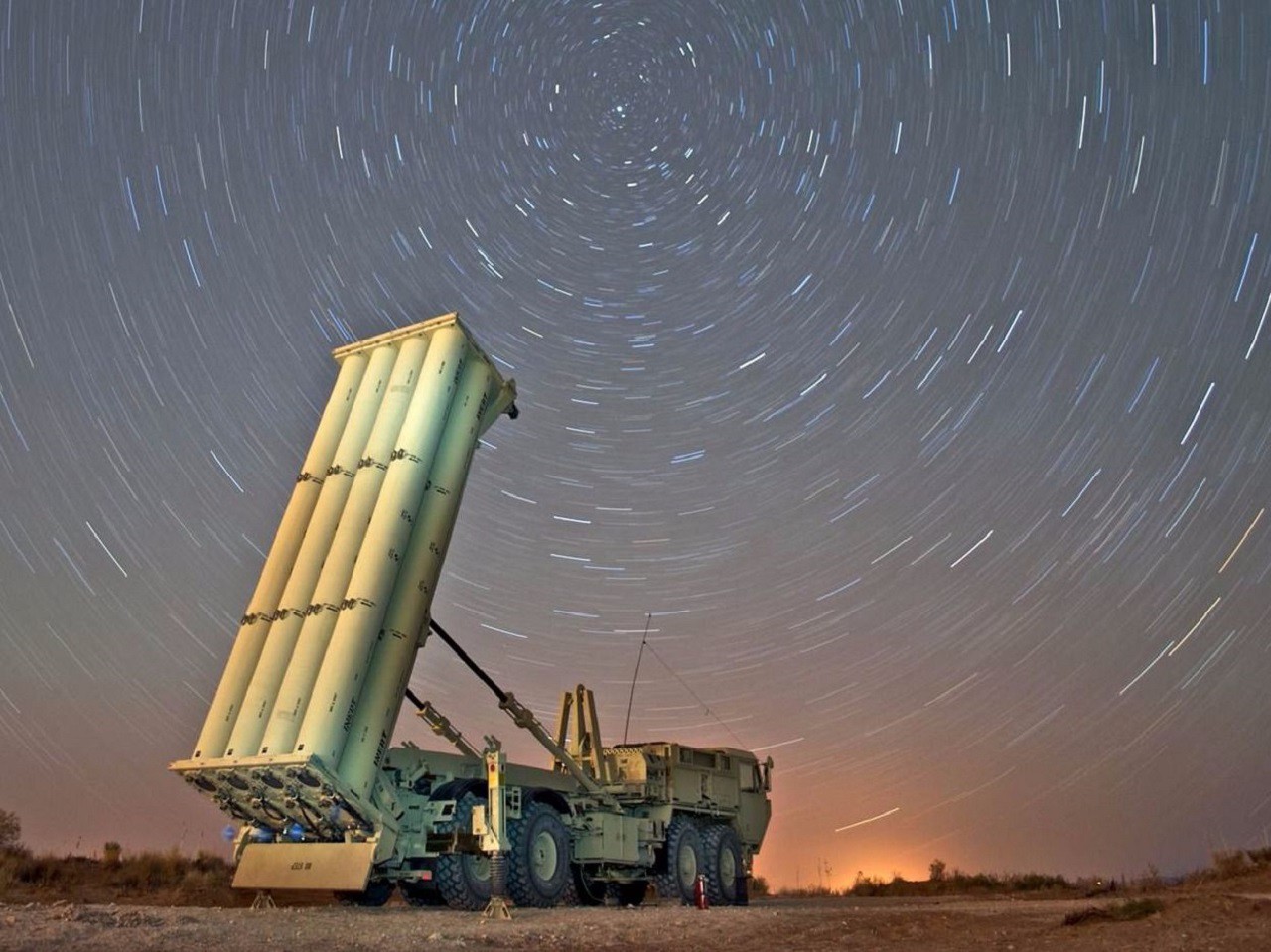
If gradual changes to our biosphere resulting in sea level rise and mass extinction represent the clock slowly ticking down on humanity’s tenure on Earth, then the threat of global nuclear war is our omnipresent option to go out in one dramatic blaze of glory.
In the Bulletin of Atomic Scientists article Chomsky alluded to during his Times interview, nuclear experts detail the threats posed by U.S. nuclear modernization efforts undertaken by the Obama and Trump administrations, writing in March that the, “combination of this lack of Russian situational awareness, dangerously short warning times, high-readiness alert postures, and the increasing US strike capacity has created a deeply destabilizing and dangerous strategic nuclear situation.”
Though some might assume that both U.S. and Russian authorities would take nothing short of the most prudent precautions in establishing nuclear protocol, history shows that a lack of “situational awareness” might be the most likely reason the world ends up cloaked in a permanent nuclear winter.
The Bulletin article also explains the story of “the false alert of 1995,” an event also known as the “Norwegian rocket incident” and the “Black Brant scare.” This near-extinction event took place four years after the collapse of the Soviet Union, when a team of scientists launched a rocket containing scientific equipment from the coast of Norway.
Russian early warning systems took notice of the rocket as it crested the horizon at a similar trajectory as a submarine-launched nuclear missile, leading the military of the four-year-old nation to conclude it was about to be the target of a preemptive nuclear strike.
President Boris Yeltsin cracked open his nuclear briefcase for the first time ever in response, activating the keys necessary to launch a retaliatory strike but ultimately holding off for long enough to determine that the rocket was not, in fact, headed for Russia and deactivate the briefcase.
Thus, humanity narrowly avoided the total nuclear annihilation that would have resulted when the U.S. inevitably launched a retaliatory strike against Russia, and we survived to flirt with extinction another day. This event offers a glimpse of just how close to the brink we live, in a world with nine nuclear states that do not always get along.
Using the “doomsday clock” to articulate their never-ending existential dread, the Bulletin of Atomic Scientists has regularly consulted with 18 Nobel Laureates since 1949 to move the clock hand to, “signal our assessment of world events and trends” and, “convey, through a simple design, the perils posed by nuclear weapons.”
Today, as a result of the tens of thousands of nuclear weapons possessed by a rowdy club of nine states and the thousands of weapons ready to launch on a moment’s notice, the hand of the doomsday clock sits at two and a half minutes to midnight.
The clock’s current position is the closest it has been to midnight since 1952, when the U.S. blasted away a small Pacific island with a thermonuclear test and the Soviet Union responded by testing an H-bomb of their own.
Just over a decade later, an international nuclear test ban treaty would go into effect, ending the threatening tests by signatories and moving the doomsday clock back to “twelve minutes to midnight,” the farthest we’ve been from extinction in over half a century.
Today, U.S. and Russian jets dart through the skies over Syria, sometimes within mere feet of each other, India and Pakistan remain perpetually poised for war, and North Korea hones their intercontinental ballistic missile capabilities and. The result of these dynamics is a turning point for humanity, as we desperately seek ways to reverse the fatal course we’ve set for ourselves.
Either we essentially start from scratch to construct fundamentally new paradigms through which we can organize our political and economic systems that are entirely sustainable and pray that biodiversity returns to the planet, or we inevitably go extinct along with the rest of the species we have killed off.
No Hope

Unfortunately, while survival is still tantalizingly possible, it is exceedingly unlikely to become reality. The capitalist system that has brought humanity to this tipping point is inherently self-perpetuating in pursuit of short-term profit, powered by an infinite supply of human greed.
Therefore, it maintains a tight mental vice grip on its customers, preventing a critical mass of people from becoming aware of the severity of humanity’s predicament and being motivated to action. For example, coverage of climate change on all major news networks in the U.S. throughout all of 2016 totaled a combined 50 minutes, a 66% decline from 2015.
Similarly, an article by international affairs and anthropology professor Hugh Gusterson in the Bulletin of Atomic Scientists derided the editorial staff of The Washington Post and The New York Times for their minimal and skewed coverage of a historic UN vote to ban all nuclear weapons.
Not only was the story overshadowed by Trump’s antics at the G20, it was told from a blatantly Eurocentric perspective that highlighted the representatives of the nuclear nations that boycotted the vote. The narratives of the 122 nations that voted in favor of the legally binding resolution banning nuclear weapons, many of which are in the global south, were completely absent from media coverage.
While first-world citizens consume copious resources, concerning ourselves with tribal feuds and trivial tweets, the world is literally burning around us. Famine persists in East Africa, with no-one to foot the bill for aid and no fifteen minutes of fame for the scores of children who die of malnutrition by the minute.
We are morally content to allow a handful of individuals to possess the combined wealth of the poorest three and a half billion people, who each live on a few dollars a day at the most — as long as the Amazon deliveries keep showing up at our doors and our iPhones stay charged.
We’ve thrown ourselves head first into a period of mass extinction, and we’re constantly teetering on the brink of total nuclear annihilation — not that we seem to care.
27 March 2019


